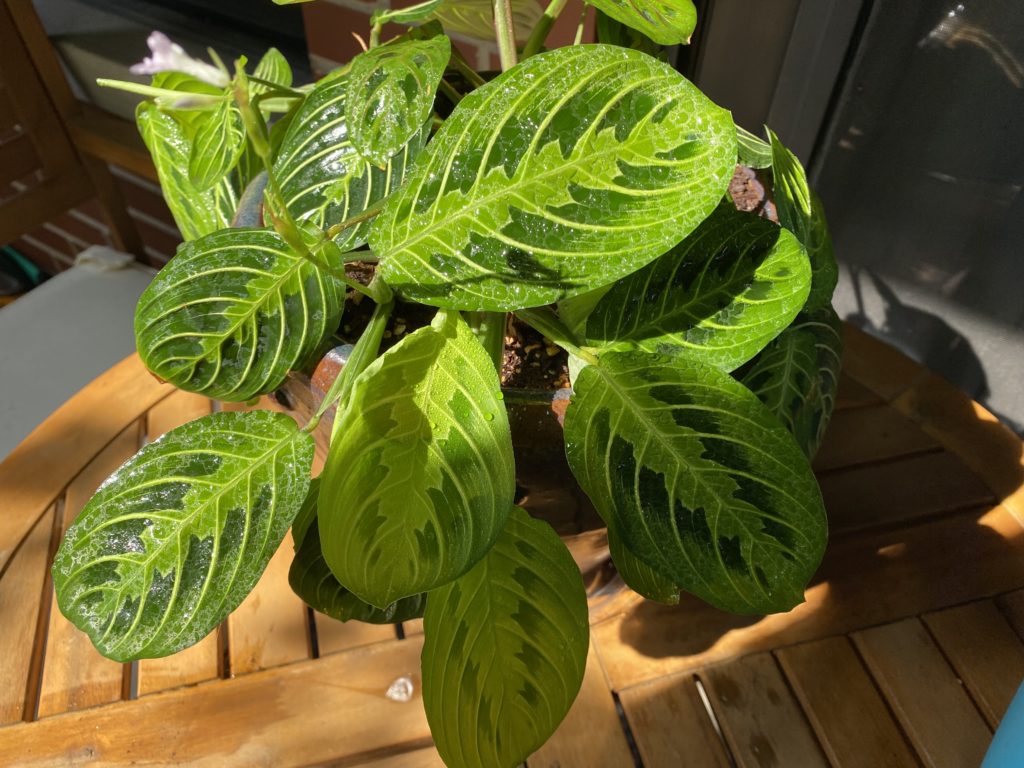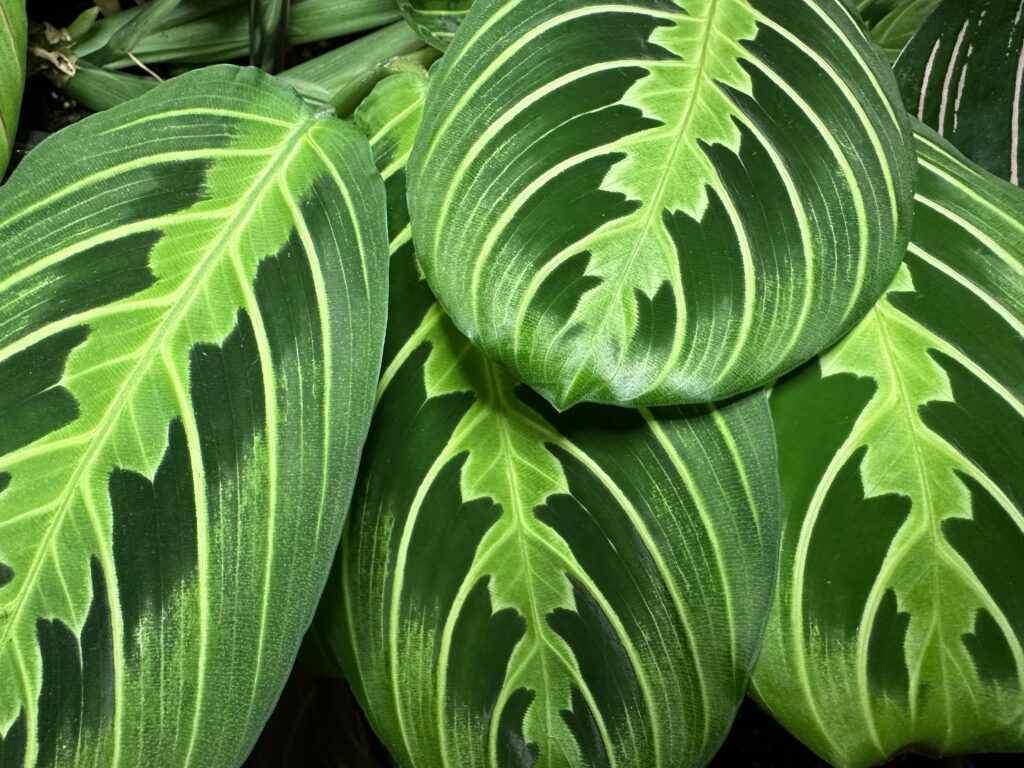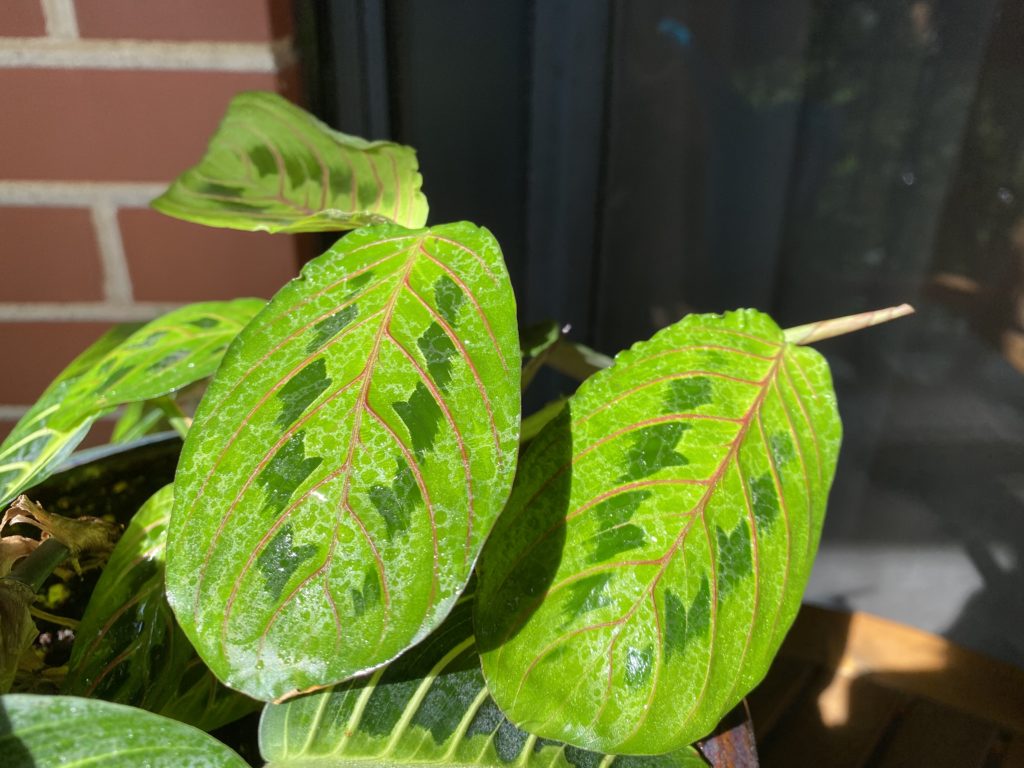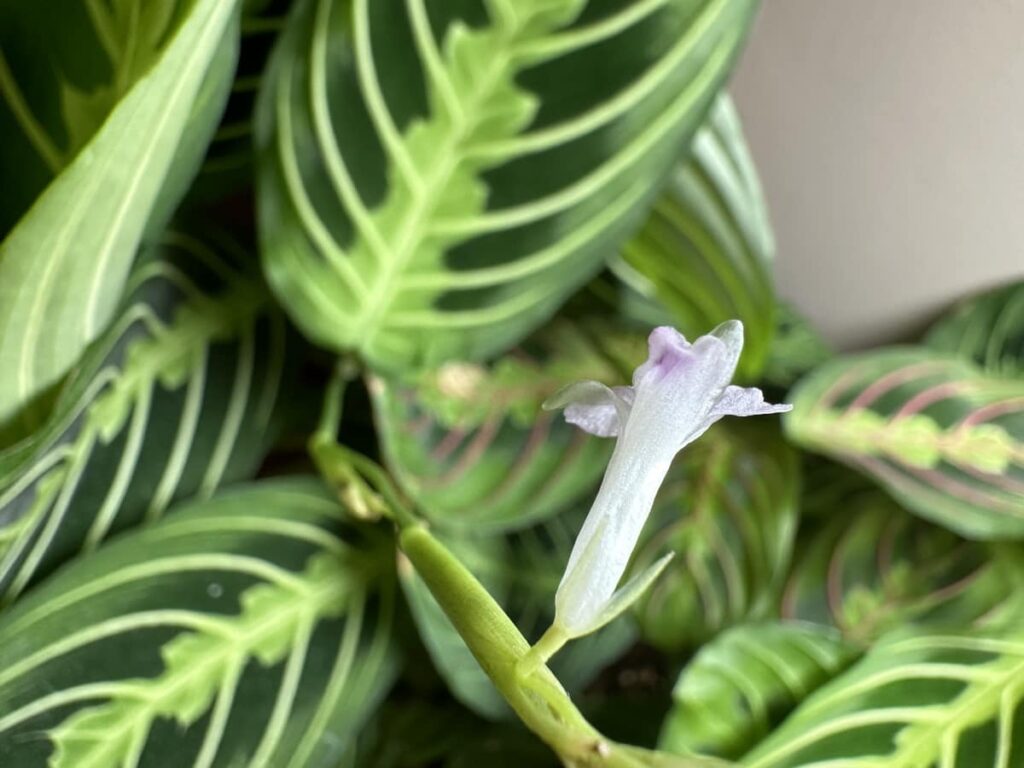The Maranta leuconeura, commonly referred to as the Prayer plant, is a well-liked houseplant that is adored for its exceptional foliage and its ability to thrive in low-light environments. These plants are indigenous to the tropical regions of Central and South America and are recognized for their remarkable leaves that fold up at night, resembling hands in prayer. Although prayer plants are primarily cultivated for their foliage, they can also produce stunning flowers under the appropriate conditions. In this article, we’ll dive into how you can encourage your prayer plant to bloom and relish in the complete beauty of this exceptional houseplant.
Their stunningly detailed leaves give off a strong tropical feel. The most famous variants are the Maranta Red and Maranta Green. Both of these are commonly found at nurseries worldwide.
Prayer plants are relatively simple to care for and can be a fantastic addition to any indoor space. They are renowned for their air-purifying qualities and can aid in enhancing the air quality in your home. Furthermore, prayer plants are known to be non-toxic to pets, making them perfect for pet owners. They are also very easy to propagate, making them a great choice to quickly grow a personal plant collection, or as a great go-to plant to gift cuttings to friends.
Understanding the Flowering Process of Prayer Plants

Prayer plants, also known as Maranta leuconeura, are a popular choice for houseplants due to their unique foliage and their ability to fold their leaves at night, resembling hands in prayer.
To achieve your goal of seeing your prayer plant bloom, it is crucial to understand the flowering process. These plants are known to produce small, white flowers that bloom in the spring and summer months, serving as a sign of a healthy and happy plant.
But, what are the specific conditions required for prayer plants to flower? Well, it’s a complex process that involves proper lighting, temperature, and humidity levels. These plants thrive in bright, indirect light, and temperatures between 60-80°F. Additionally, they prefer high humidity levels, which can be achieved by placing a humidifier near the plant or misting it regularly.
However, that’s not all. Proper watering is also a crucial factor in the flowering process of prayer plants. Overwatering can lead to root rot, which can prevent the plant from flowering. On the other hand, underwatering can cause the plant to become stressed, leading to stunted growth and a lack of flowers.
Moreover, it’s important to note that prayer plants require a period of rest during the winter months. During this time, reduce watering and fertilization to allow the plant to conserve energy for the upcoming flowering season.
Understanding the flowering process of prayer plants is essential in helping you achieve your goal of seeing your plant bloom. By providing the proper lighting, temperature, humidity, and watering conditions, you can encourage your prayer plant to produce beautiful flowers and thrive in your home. So, go ahead and give your prayer plant the care it deserves, and watch it burst into a beautiful bloom!
Factors that Affect Prayer Plant Flowering
When it comes to the flowering of your prayer plant, there are a multitude of factors that can come into play. Understanding these factors can help you create the ideal conditions for your plant to bloom in all its glory.
First and foremost, let’s talk about light. Prayer plants require bright, indirect light to flower. However, if your plant is not getting enough light, it may not produce flowers. On the other hand, if it is exposed to direct sunlight, it can damage the leaves and prevent flowering. So, finding that perfect balance is key.
Next up, temperature. Prayer plants prefer warm temperatures between 65-80°F. If the temperature drops below 60°F, it can slow down the growth of the plant and delay flowering. So, keeping your plant cozy and warm is essential.
Humidity is also a crucial factor in the flowering of your prayer plant. These plants thrive in high humidity levels. If the air is too dry, the plant may not produce flowers. You can increase humidity by misting the leaves or placing a humidifier near the plant. So, don’t be afraid to get a little misty with it.
Now, let’s talk soil. The soil should be well-draining and rich in nutrients. If the soil is too compact or lacks nutrients, it can affect the growth of the plant and prevent flowering. So, make sure your plant is getting the proper nutrients it needs to thrive.
Last but not least, fertilizer. Prayer plants require regular fertilization to bloom. Use a balanced fertilizer every two weeks during the growing season to provide the necessary nutrients for the plant to produce flowers. So, don’t forget to give your plant a little extra love and attention.
By ensuring that your prayer plant is getting the right amount of light, temperature, humidity, soil, and fertilizer, you can encourage it to bloom and enjoy its beautiful flowers.
Tips for Encouraging Prayer Plant Flowering

For those who have a passion for plants, witnessing their plants bloom is an incredibly gratifying experience. The prayer plant, scientifically known as Maranta leuconeura, is a stunning houseplant that can add a pop of color and liveliness to any room. However, coaxing your prayer plant to flower can be a bit of a challenge. Here are some tips to help encourage your prayer plant to bloom:
Provide Adequate Light
Prayer plants thrive in bright, indirect light. It’s best to place your plant near a window that receives plenty of natural light, but be sure to avoid direct sunlight as it can scorch the leaves. If your plant isn’t receiving enough light, it may not produce flowers.
Maintain Consistent Moisture
Prayer plants prefer moist soil, but they don’t like to be waterlogged. Water your plant when the top inch of soil feels dry to the touch. Avoid letting the soil dry out completely, as this can cause the leaves to wilt and drop. Consistent moisture is key to encouraging flowering.
Keep Humidity High
Prayer plants are native to tropical regions and thrive in high humidity. To increase humidity, you can mist your plant regularly or place a humidifier nearby. You can also place a tray of water near your plant to create a humid microclimate.
Fertilize Regularly
Prayer plants benefit from regular fertilization during the growing season. Use a balanced, water-soluble fertilizer every two weeks to provide your plant with the nutrients it needs to produce flowers.
Prune Your Plant
Pruning your prayer plant can encourage new growth and flowering. Remove any yellow or brown leaves, as well as any leggy or straggly stems. This will help your plant focus its energy on producing new growth and flowers.
By following these tips, you can encourage your prayer plant to bloom and enjoy its beautiful flowers. Remember to be patient, as it may take some time for your plant to produce flowers. With a little care and attention, your prayer plant will reward you with its stunning blooms.
Common Problems and Solutions for Prayer Plant Flowering

Prayer plants are a sight to behold, with their stunning foliage and breathtaking flowers. However, many plant owners struggle to get their prayer plants to bloom. If you’re one of them, don’t worry! We’ve got you covered with some common problems and solutions for prayer plant flowering.
First up, let’s talk about light. Prayer plants need bright, indirect light to flower. If your plant isn’t getting enough light, it may not produce flowers. The solution? Move your plant to a brighter location, but be sure to avoid direct sunlight.
Next, overwatering can be a real problem for prayer plants. It can cause root rot and prevent your plant from flowering. To avoid this, allow the top inch of soil to dry out before watering and make sure your pot has good drainage.
On the other hand, if you’re not watering your prayer plant enough, it may also struggle to flower. To remedy this, water your plant regularly, but don’t let it sit in standing water.
Humidity is another factor to consider. Prayer plants thrive in humid environments, and low humidity can prevent flowering. To increase humidity, try misting your plant regularly or placing a humidifier nearby.
Finally, lack of nutrients can also be a culprit. If your prayer plant isn’t getting enough nutrients, it may not have the energy to produce flowers. To fix this, fertilize your plant every two weeks during the growing season with a balanced fertilizer.
By addressing these common problems, you can help your prayer plant produce beautiful flowers. With a little care and attention, your prayer plant can become a stunning addition to your home or office.
Conclusion and Final Thoughts on Prayer Plant Flowering
In the grand scheme of things, prayer plants are a sight to behold. Their unique and captivating beauty can add a touch of nature to any indoor space. However, getting them to flower can be a bit of a challenge. Fear not, with the right care and attention, you can encourage your prayer plant to bloom and enjoy its stunning flowers.
Prayer plants are relatively easy to care for, but they do require a certain level of maintenance. Providing your plant with the right amount of light, water, and humidity is crucial. Overwatering can be detrimental to your plant’s health, so make sure the soil is well-draining. Fertilizing your plant regularly during the growing season and pruning it to encourage new growth is also essential.
If you’re willing to put in the effort and remain patient, your prayer plant will eventually reward you with its beautiful flowers. With a little bit of care and attention, you can enjoy the stunning blooms of your prayer plant and air purifying qualities these stunning plants offer for years to come.
Frequently Asked Questions
What is a prayer plant?
A prayer plant, also known as Maranta leuconeura, is a popular houseplant known for its unique foliage and ability to fold its leaves up at night, resembling hands in prayer.
Why won’t my prayer plant flower?
Prayer plants typically flower in the wild, but it can be difficult to get them to flower indoors. The most common reason for a prayer plant not flowering is lack of light or improper watering. Make sure your plant is getting enough bright, indirect light and that you are not over or under watering it.
How can I encourage my prayer plant to flower?
Prayer plants need a lot of light to flower, so make sure your plant is getting enough bright, indirect light. You can also try fertilizing your plant with a balanced fertilizer every two weeks during the growing season to encourage flowering.
What should I do if my prayer plant is not growing well?
If your prayer plant is not growing well, it may be due to a lack of nutrients or improper watering. Make sure you are fertilizing your plant regularly and that you are not over or under watering it. You can also try repotting your plant into fresh soil to give it a boost.
Can I propagate my prayer plant?
Yes, prayer plants can be propagated by division or stem cuttings. To propagate by division, carefully separate the plant into smaller sections and repot them in fresh soil. To propagate by stem cuttings, take a cutting from the plant and place it in water or soil until it roots.

